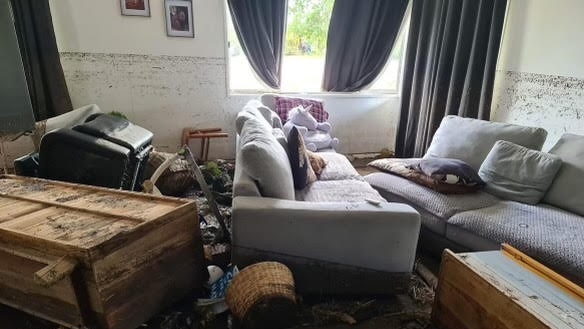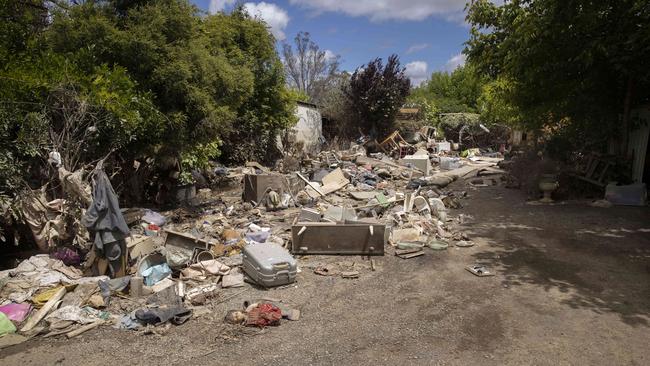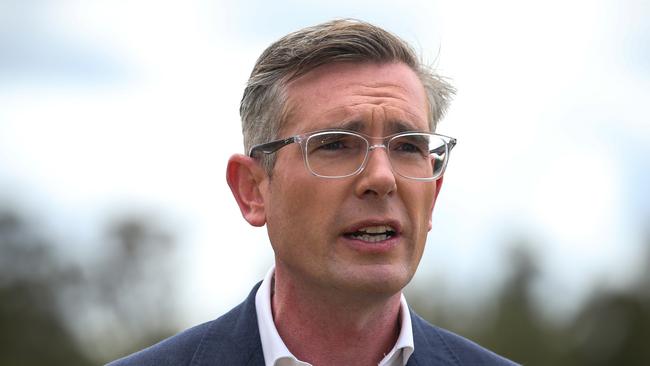Premier Dominic Perrottet to push for massive change on flood insurance following NSW’s horror year
Premier Dominic Perrottet is pushing the Albanese government for a massive change that could help NSW residents living in flood prone areas who can’t afford insurance.
NSW
Don't miss out on the headlines from NSW. Followed categories will be added to My News.
Flood-prone residents in NSW who can’t afford insurance – or in some cases are being refused cover point-blank – could soon share in on a federal scheme used in the country’s north in cyclone-hit areas.
The Daily Telegraph can reveal Premier Dominic Perrottet will push Prime Minister Anthony Albanese and other members of the national cabinet to consider extending the cyclone reinsurance pool across the country, in a bid to provide cover for residents who have been hammered by floods across NSW this year.
“Insurance has been constantly raised with me as I’ve travelled around flood impacted towns,” Mr Perrottet told The Telegraph.
“I recognise this is a complex issue, but flood prone communities can’t be left without insurance.
“The insurance companies can’t leave these communities behind. I’m putting insurance availability and affordability in high-risk flood areas on the national agenda.”

Federal Calare MP Andrew Gee – who has been a constant presence in the tiny central-west town of Eugowra since it was devastated by a flash flood last month – said the cost of insurance had ruled many out of getting cover before the disaster.
“A lot of people are really struggling at the moment – they’re finding the whole situation overwhelming,” he said.

“The issue in Eugowra is not that people didn’t have insurance – it’s that they couldn’t get insurance for floods at the premiums that were asked.
“The companies were asking up to $40,000 per annum for floods – and nobody can afford that no matter where you live.”
A spokeswoman from the Insurance Council of Australia claimed the scheme being extended wouldn’t make a difference because “a reinsurance pool for flood won’t stop the physical impacts of flood on property and communities”.
“The key lever to improving the availability and affordability of insurance is reducing or mitigating the risk that is present,” she said.

The NSW Government has already put $4.4b on the table for flood recovery and mitigation and has established a Reconstruction Authority to focus on long-term recovery, but Mr Perrottet said all levels of government needed to come together on a solution for insurance.
“This will require a national solution and all options should be on the table,” he said.
“All levels of government need to work together with the insurance industry on innovative products and solutions to solve this problem.”
Reinsurance pools like the one in Australia’s north – which is backed by a $10 billion federal government guarantee and enables insurance companies to keep their prices down – have been established throughout the world.
The UK has a flood specific reinsurance scheme for high risk areas called ‘Flood Re’ while New Zealand have a broad scheme that covers people from earthquakes known as EQCover.
State and territory treasurers across Australia have already been tasked with considering ways to improve insurance affordability, following a year where regional NSW has repeatedly been devastated by flooding.
Eugowra resident Natalie Watt and her partner Blake Osborne have been given $500 from their insurance company for the food they lost in their fridge after more than a metre of floodwater ruined their home in the flooding a month ago.
They have to replace the plaster on all of their walls, redo their carpet, flooring, kitchen and bathroom which is expected to cost them $40,000.
They have two young girls under two, Indiana who is 20 months old and Lydia who is six months old, with all four of them living in a caravan outside their back veranda given to them by Service NSW following the flood.
“(Our company) initially said we were covered and now they‘re saying we are not covered for anything,” Ms Watt said.
“They said we would get $500 for expenses for the stuff that was in our fridge.”
She said they weren‘t covered for a natural disaster but still paid $900 a month for their home and two cars.





